Marine Discovery Center Executive Director Chad Truxall got involved with MDC in its early years while he was teaching at New Smyrna Beach High School. That early relationship turned into more than he ever could have imagined.
As the center enters its 25th year of operation this year, read about Truxall’s early involvement with the upstart nature center, where he sees it today, and what he envisions for the future in this interview with MDC staff writer Lisa D. Mickey:
Q: How did you get to MDC in those early years?
A: My wife and thought Volusia County would be a great place to start our careers. I had worked at the University of Florida’s Florida Lake Watch Program for a year after earning my bachelor’s degree and was hoping to find a field position in Volusia County. After interviewing with the Volusia County Mosquito Control, I realized that my lack of local knowledge in the area would be a hinderance to finding the perfect job. My cousin was teaching science at NSB Middle School and suggested I contact the principal at NSB HS. I had no idea then how that moment would change my career path! Although I didn’t have my teaching credentials, I did have some experience in informal education through the fisheries department at the University of Florida.
As a first-year teacher, I taught Critical Thinking and Introduction to Agriscience to almost 200 ninth graders! My degree was in wildlife and fishery science, so I was struggling with the content and the basic concepts curriculum development, classroom management, and assessment. That first year was a real challenge!!!
During my second year, I was asked to teach marine biology. This course was much more aligned with my degree, and I was a lot more comfortable with the teaching side of the equation (albeit still learning). During the first two years at New Smyrna Beach High School, my portable classroom was in the same location where we now have MDC’s restored salt marsh! One day the principal, Dr. Carol Anne Kelley who was a founding board member of MDC, asked if I would like to join her an MDC board meeting. MDC was interested in working with the high school to develop educational programs centered around the Marine Sciences. That was 2001 and it was my first introduction to the Marine Discovery Center.
Q: What happened after that first introduction to MDC?
A: During the meeting I met board members and staff that were involved in developing the vision and mission of MDC. It was an exciting time, and the energy was contagious! At this time, MDC was located in the city’s old water treatment plant on the North Causeway. Not too long after this meeting, I received a call from MDC founder and biologist, Bruce Jaildagian. MDC had received some grant funding to develop marine science-based curriculum and Bruce was looking for a team of teachers to help. That’s when I got more engaged as a volunteer with the Marine Discovery Center. I asked if I could bring students over to the center or if I could help with the aquariums. I remember bringing about 15 students and testing the idea of using the boat as a tool for educational field trips with Bruce. I think this was around 2002. We pulled a seine net around the islands and sandbars and were doing then what we still do today.
Q: How did you become more personally involved at MDC?
A: In the summer of 2001 or 2002, I was asked to run a summer camp program through the Museum of Arts and Sciences for the new Marine Science Center in Ponce Inlet. The museum oversaw the first camps at the Marine Science Center and I ran two or three weeks of camp there. As I was doing that, I was still working with Bruce and volunteering at MDC during the summer months. I suggested that we also try holding a summer camp, so we ran a camp for eight kids that summer at MDC. We set up our classroom in the old water treatment plant. We had old microscopes to look at plankton. We had some outdoor tanks and we had the boat, our floating classroom. The boat was being used for tours, but nothing like it’s used today. This enabled us to use the boat for hours exploring the treasures of the Lagoon. We named our first camp Mangrove Maniacs and developed a photo slideshow for parents and grandparents to see on Friday. The feedback was very positive and Mangrove Maniacs is still part of our summer camp offerings today, twenty years later!
Q: Were you still teaching, while working for MDC whenever you could?
A: I was still teaching, but I stayed involved at MDC and went back and forth, trying to bring my students there for activities. The following summer, we did at least four weeks of camp at MDC with 80 campers. The next year we did six weeks of camp with 120 campers. I ran the camps through the summer of 2004. In the spring of 2004, I joined the MDC board with the goal to develop a plan to grow the educational programming. I continued to teach but during the summer I was informed that my temporary teaching certificate had expired. I needed one additional course to complete the certificate but because time was limited, my principal couldn’t hire me for the upcoming school. I was devastated. We had a brand-new baby and suddenly, I had no job!
So, I started trying to find work and a buddy who did landscaping hired me. I worked for him for two weeks and I was notified by the MDC board that I needed to step down from the board because they wanted to offer me the position of Director of Education. A donor floated my salary for the first year. My job was to develop field trips. At that time, there were a few volunteers and two staff members: Maddy Abbott, who was our office manager and our founder, Bruce, who served as the staff Biologist and head of boat operations. In my new role I started developing relationships and getting MDC on the radar as a viable field-trip option. We created different trips and put together marketing materials. Everything was about educational programs, field trips and summer camps. We wanted to offer programs for schools and get schools to come to us. We started gaining momentum and by that first year at MDC, I was able to pay for my salaried position.
Q: What happened after that?
A: I ran the education program for seven years, from 2004-2011, and became MDC’s interim director in 2011. Bruce retired in 2006. When I was hired, we were in the Connor Library in Old Fort Park. We wanted to relocate back to the old water treatment plant on the North Causeway site because our boat was there at the dock. We couldn’t ask for ECHO funds because we had no guarantees for permanency at our location. Local residents Nelson and Heidi Cambata were big supporters of MDC and provided us with two modular trailers to serve as our office and classroom. We also received in-kind support from Volusia County and returned to the property in 2006. In addition to offering educational programs, we began developing partnerships centered around conservation work of the Lagoon. One of our first partners was the Marine Resources Council. We worked with them to grow mangroves and plant shorelines. We then started working with the Nature Conservancy Center to help with their oyster restoration project on Chicken Island. This led to additional partnerships and eventually grant funding to support our projects. We received some grant funding from the National Estuary Program to do stormwater pond habitat restoration. We created a little nature trail to highlight a small on-site stormwater pond and added signage about what we were doing with the mangroves and oyster restoration.
Q: What other programs were added at MDC?
A: We added a kayak program. Barbara Plourde owned a local kayak business and she contracted with us to start a kayak program at MDC. When she moved on, she sold us her kayaks. We continued to grow the kayak program and expand the restoration and education programs, hiring teacher Lou King. She helped me with camp that first summer and after that, we hired her full time to develop our younger camper program. She loved connecting younger children to the Lagoon through science and art and was a very creative teacher.
Q: Describe some ups and downs during your early tenure at MDC.
A: One major event occurred when the Coast Guard inspection officer told us that our 9-year-old boat was no longer sea-worthy! We needed anew boat and didn’t have the funds. We couldn’t run the bulk of our programs with the boat out of order and we had to get creative. One of our volunteers and member, Snookie Demarce came up with a great idea to paddle the entire 156-mile length of the Lagoon and raise money to buy a new boat. We called the campaign, Keep us Afloat and after several months we raised enough funds to purchase a new boat.
Fielding Cooling came in as MDC’s executive director from 2006-2010. MDC’s board decided to take advantage of a grant to run a water taxi in New Smyrna Beach. We had boat captains and we had experience with boats, so there was a push for the Marine Discovery Center to put in a bid. I wasn’t a big fan of this because it was off target of our mission. However, if we ran the water taxis, we would have some extra money to hire an executive director. We didn’t have one at the time. We won the contract and operated two boats out of the North Causeway location. We were responsible for scheduling, admissions, pricing, captain training and running the boats. It was exciting, but it was a lot of work. Although the water taxis weren’t part of our mission, they helped us add Fielding to the MDC team. As our executive director, Fielding helped us in so many ways through grant writing. He helped us get the Nature Conservancy grant and he also helped us get a Port Authority grant to replace our eco-tour boat during the Keep Us Afloat campaign. He was a strong grant writer and community builder. He understood the value of partnerships – including the partnership to eventually move into the former New Smyrna Beach High School site where we are now located.
Q: How did the former water taxi affect MDC’s other boat programs?
A: It ended up cannibalizing some of our tours. It was cheaper for guests to go on the water taxi for $8 to $12, when the eco-tours were $20. The water taxi wasn’t narrated and wasn’t an eco-tour, but for many general tourists, it was still a boat ride. That was an unintended consequence. The business model wasn’t sustainable and the city was very clear that when the grant funding ran out, the water taxi was gone. This happened during the recession in 2008. It was unfortunate that when it ended around 2010, we had no money to pay for an executive director and Fielding retired.
Right before that happened, there was a story in the newspaper about local resident Karen Clancy, who raised the point that the old New Smyrna Beach High School property could not be sold for development. When the school closed, the deed reverted to the state to be used for purposes of education, research, and passive recreation. Karen had a vision of creating a marine science facility for our region. As I was reading the article, I realized that we shared the same vision. Shortly after, we learned that the Florida Fish and Wildlife Conservation Commission (FWC) had an interest in the property as part of their statewide marine enhancement center initiative. I called Fielding and we set up a meeting with FWC’s foundation. It all fell into place.
The state was interested in going after an ECHO grant when they learned this site was available and would fit the criteria. They wanted to get a local community environmental organization involved – which was us – and they got connected with The Artists’ Workshop, which was losing their space at the city’s Chamber of Commerce location. Artists’ Workshop needed space and we needed space. That’s how the marriage of the two organizations came together and are still here today. We partnered with FWC and their foundation to develop the first ECHO grant and get us here. [Note: ECHO stands for Education, Culture, History and Outdoors.]
Q: Were those days of real challenges needed for MDC to become what it is today?
A: We had to have those moments because of the way we started. I have since learned a lot about other nonprofit nature environmental learning centers. Some of them started out with an endowment and a base of support they could build on. We were a very traditional grassroots nonprofit, but there was never any major infusion of cash. There was a dream and vision and lots of ideas. Our original idea was to have marine aquariums and marine rehabilitation, then all of a sudden, the county developed the Marine Science Center in Ponce Inlet. Maybe that could have been us. When that didn’t happen, we decided our renewed focus bringing people o the Lagoon through hands-on, feet-wet education experiences
Without a lot of money, focusing on the lagoon was a more attainable goal. People were very passionate about our true grassroots start, but we had to be dependent on earned revenue to be sustainable because we didn’t have big wealthy donors.
And we didn’t have much for folks to want to support at the time. Our programs were great, but if you had not participated in them, you weren’t impacted by them. They didn’t have a visual impact. We had a small staff and we depended on a for-profit strategy. The good thing about that was, nearly 90 percent of our revenue was coming from fees that we generated from camps, field trips, kayak and boat tours.
Because we were so strong at that model, as we started to get better in grant writing, special events, partnerships, donations and membership, it helped us add capacity pretty quickly. That’s the direction I knew we had to focus on when I became executive director in 2010. We had to have higher expectations from our members and board members and we couldn’t be afraid to ask for financial support. We are an organization worthy of support. We started doing special events and writing appeal letters. We applied for an ECHO grant on our own. We focused on elevating our position in the community, as well as our budget so we could hire more staff to do the things that need to be done. We went from an annual budget of $300,000 to close to $1 million. We have also built an endowment fund with a couple of hundred thousand dollars and we have strong savings. Those are all responsible things we should be doing to make sure we are sustainable.
Q: Through everything, it seems MDC has built a very solid base of volunteers over the years.
A: There are many longtime volunteers and there are also many new faces. Our volunteers “get” our mission, are attracted to the mission and have contributed greatly to us succeeding in our mission. They feel like they are doing something to help. Regardless of whether it’s to connect to their community, meet some friends and feel like they are giving back or whether they are going to actually plant some mangroves or help out with data on microplastics, it’s important. For every nonprofit, you build your volunteers, your volunteers become your members, your members become your donors, and your donors can support you in lots of different ways. Some of our volunteers have matching opportunities with employers and sometimes, we receive in-kind support. But yes, volunteers have been a sold base for us and we love them!
Q: There are future plans for MDC with capital improvements, but looking ahead, what do you see?
A: A staff with opportunities to grow within the organization and a strong living wage with competitive salaries and benefits. We don’t really have those layers yet and we’re working to develop that. That’s been really important to me. We want MDC to be a destination that embodies the mission but also generates significant revenue. This additional revenue will help increase our capacity to support staff and expand our conservation work. Visiting other nature centers has helped me ask what we want to look like? Our vision includes outdoor exhibits, native landscapes, nature playscapes, a nature-based preschool, a hub for conservation and restoration, and a new visitor center. In addition, we envision more direct access to the Lagoon from our property. We want to be an eco-destination for locals and visitors. We want to share the unique and awesome stories of the creatures that inhabit the Lagoon and empower our community to be a part of the solution.
Q: What must we do to better distinguish ourselves from the Marine Science Center? People still often confuse the two centers.
A: We love our partners at the Marine Science Center and they’ve always been good to us. It’s not a bad thing to be associated with them; however, even with a more robust marketing effort, we still have more to do to distinguish who we are. Most people know us for our boat trips and camps, our hands-on, feet-wet programs. The Marine Science Center is known for its sea turtle and sea bird rehabilitation and stingrays. Facility-wise, people come to the property and see a large amphitheater. But that’s just one facet of our programs and work to use different mediums to share the story of the Lagoon. We still need to come up with our identity and what we want to be known for and make sure that everyone else knows that. For example, marine rehabilitation is not our thing, but maybe we want to do something really unique with horseshoe crabs. We already do horseshoe crab monitoring and tracking. Maybe we could culture horseshoe crabs to help with population levels and educate the public about the not-so charismatic species of the Lagoon? Maybe our role, is to bring light to the obscure creatures that inhabit our waters? As the most biologically diverse estuary in North America, we have plenty of species to highlight! How do we work with our neighboring partner, the Artists’ Workshop, and others to discover nature through the arts? We have to ask what differentiates us from the Marine Science Center or any other nature and environmental learning center in the area? We need a stronger identity.
Q: Are you still optimistic about MDC’s next 25 years?
A: I’m very excited about what we can do at MDC. We have a mission that people connect with and they keep me inspired. They share stories of impact, friendship, and general curiosity that’s infectious. The Lagoon and other coastal ecosystems of Florida have given us so much….our economy, our food, our lifestyle, our sense of place, and so much more. It’s our turn to return the favor and MDC is in position to be the catalyst in our community.

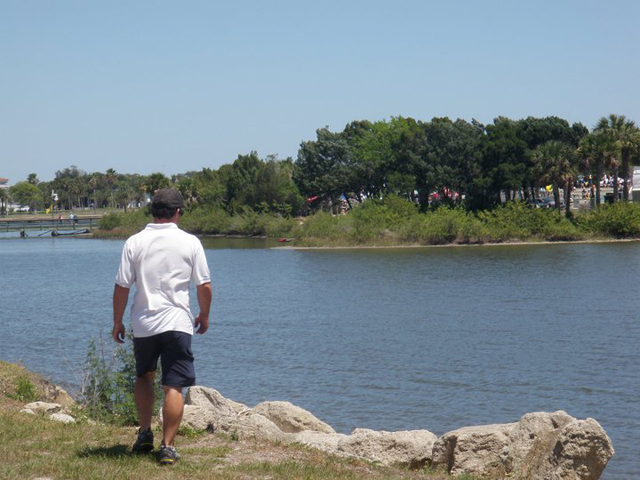
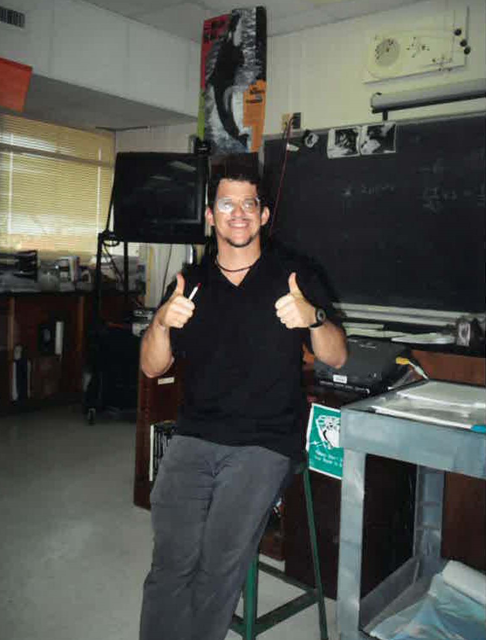
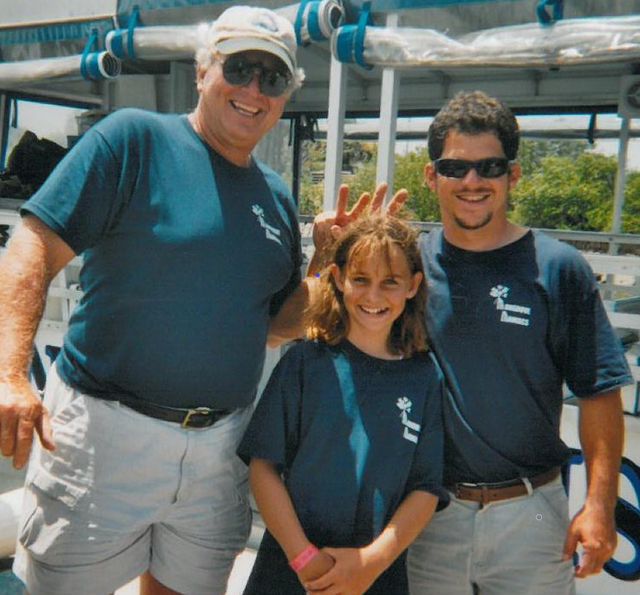
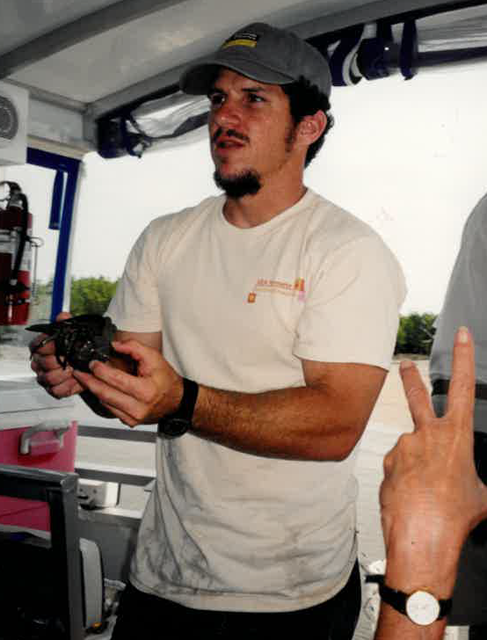
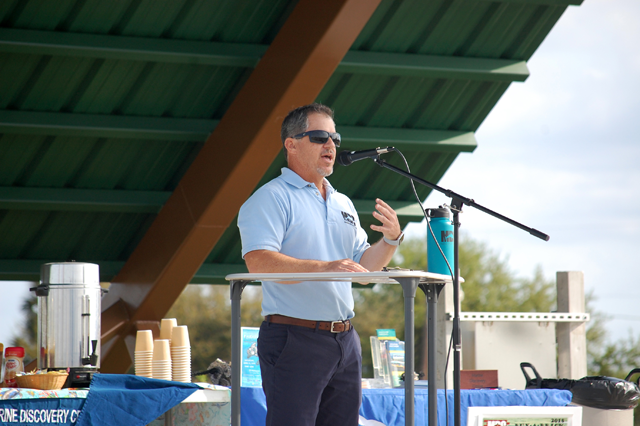
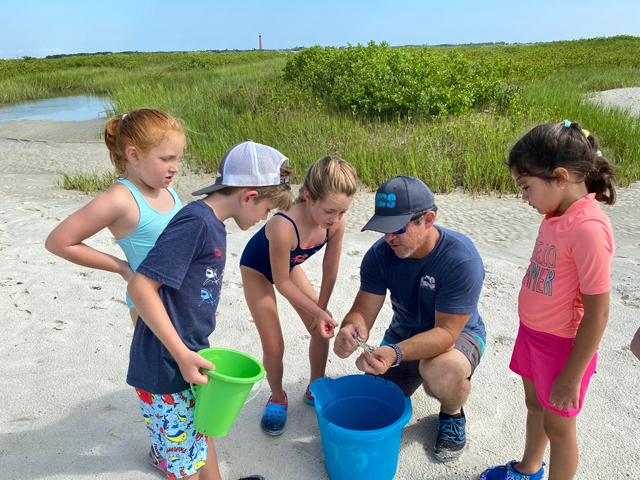
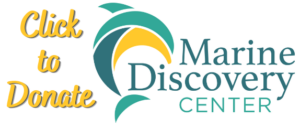
Follow Us!